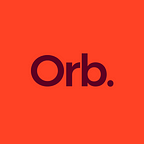Barbie is one of the most historically iconic brands in the world, but a few years ago it looked like Barbie would be forced to retire and downsize her Dream House. In 2014 year-on-year sales decreased 16%, the third consecutive year sales had slumped.
But while 2020 was largely a terrible year for everyone, it’s was a great year for Barbie. It’s been the fourth consecutive year that Barbie sales have increased and in October Mattel announced that Barbie had her best sales quarter performance for two decades.
So what’s happened?
Well let’s start with the problems that caused the sales slump. As ever with these things, there were a variety of factors. There was increased competition from major success stories like Disney’s “Frozen” franchise dolls, which were dominating the market in 2014. Mattel also noted that their audience was becoming narrower, kids in their upper audience age bracket were shifting away from traditional toys and towards technology items. But there was a bigger problem with Barbie — she was at odds with a huge cultural shift that was occurring in key markets.
Barbie had become a symbol for the negative stereotyping of women as materialistic, dumb and subservient to the patriarchy. She also projected an extremely unhealthy body image; if she were a real person she would likely have to walk on all fours due to her proportions. Infamously the 1965 “Slumber Party Barbie” came with a bathroom scale permanently set at 110 lbs and a book entitled “How to Lose Weight” which read simply “Don’t eat”. Half hearted efforts to shake these negative connotations had been unsuccessful.
Society was becoming increasingly conscious of issues like gender stereotyping, gender fluidity, body diversity, racial diversity etc. The Barbie brand was the antithesis of these rising attitudes and beliefs.
But Mattel was listening. In 2016 they launched a new Barbie range which included 30 different hair colours, 24 hairstyles, 14 face shapes, 7 skin tones and 4 different body shapes. Their advertising focused on promoting female empowerment, and transforming the image of Barbie into a symbol for ambition and creativity.
Just look at the contrast of these two ads.
Mattel have also tried to better engage a wider audience on modern formats; 2020 saw them release a Barbie film onto Netflix which was a major contributing factor to such a successful quarter. Production of a live-action film staring Margot Robbie and written by Greta Gerwig (Ladybird) and her partner Noah Baumbach (Marriage) is underway with promises that if you’re expecting something “typical Barbie” then you’ll be wrong.
Mattel’s efforts to reposition the Barbie brand still have a long way to go, but thanks to the brand’s willingness to listen and respond to the market, it’s on the road to recovery. It’s an important lesson for every brand, big and small. You can’t afford to ignore the world around you and let the relationship between you and your audience become just one-way.
“We didn’t have a big consumer product proposition so there wasn’t really anything outside of the toy…Previously we would market our brand as a monologue. We basically told our consumer, ‘this is who we are, this is what we are offering you and this is the end of the conversation’. Now we’ve moved into a much more appropriate form of marketing, a dialogue,”
So it’s time to ask yourself: are you listening to your audiences properly? And if you are, are you responding and adapting your brand accordingly? At Orb we can carry out App based customer research and help transform the insights into actions for your brand. Get in touch if you would like to know more.
